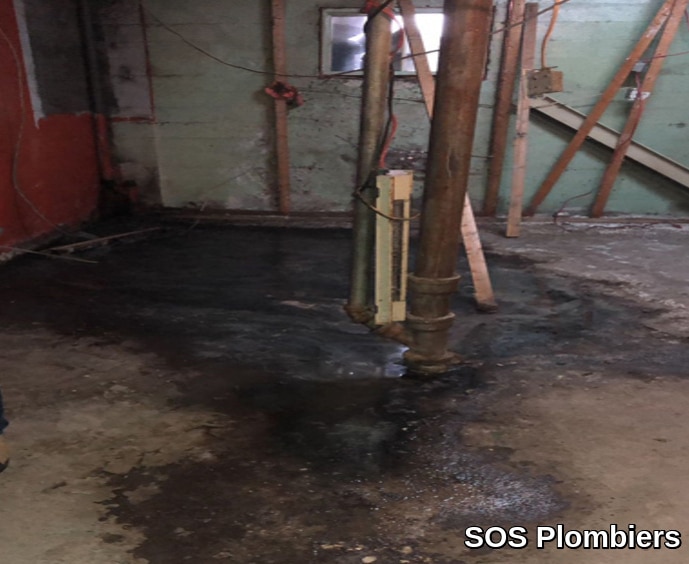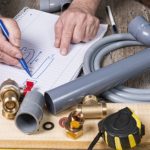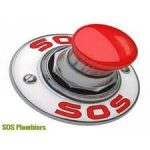Sewer backup: Everything you need to know about this phenomenon and how to prevent it
A sewer backup is a major concern for many homeowners. This problem is both inconvenient and disruptive, and can seriously damage plumbing systems. In this article, we make a point of understanding backflow, its causes and, above all, how to prevent it with the help of tools like the non-return valve.
 The reasons behind sewer backup
The reasons behind sewer backup
Sewer backup is a phenomenon that preoccupies many homeowners because of the damage and inconvenience it can cause. It is a issue that can arise at any time and the causes are manifold. To better understand this problem, let's take a look at the elements most affected and the most common reasons behind sewer backup.
Pipes and drains: The first affected by the backup
Pipes and drains play a vital role in the proper functioning of a home. They are designed to carry wastewater away from the property and into the intended drainage systems. Like the veins and arteries in our bodies, they enable water to circulate smoothly. However, when backflow occurs, these elements become particularly vulnerable.
Their essential function exposes them to constant risks. For example, the accumulation of waste or residues over time can reduce water flow, creating a breeding ground for backflow. What's more, because they are usually hidden from view, problems inside pipes or drains are not always immediately visible, making them more complex to diagnose and repair.
Common Causes of Backups
1. Blocked PipesOne of the most common causes is blocked pipes. This can be due to the accumulation of grease, hair or other debris which, over time, reduces the flow capacity of the wastewater.
2. Drains Clogged by DebrisLeaves, small objects and other residues can accumulate in drains, impeding normal water circulation.
3. Infiltrated tree rootsRoots: Roots are constantly on the lookout for water, and they can infiltrate pipes, creating obstructions. Over time, they can even damage or fracture pipes.
4. Improper Pipe SlopeFor water to flow properly, pipes must have a proper slope. If this slope is not adequate, water can stagnate, leading to backflow.
CONSEQUENCES AND DANGERS OF BACKUPS
Sewer backup is more than just an inconvenience. The consequences can be costly, unpleasant and potentially dangerous. It's essential for any home or building owner to understand its implications, so they can take the necessary steps to prevent and remedy it.
Immediate Danger of Backups on Drains
When a backflow occurs, the drains, which are supposed to evacuate the house's wastewater, can quickly find themselves invaded by this same water. This reversal of flow has several notable consequences:
- Accumulation of polluted water : Instead of being evacuated as planned, wastewater can accumulate in sinks, showers and other outlets. This water is often loaded with waste, bacteria and other contaminants.
- Unpleasant Odours : Stagnant and polluted water emits foul odors that can permeate the entire house, making the living environment very unpleasant.
- Health Risks Exposure to polluted water can cause serious health problems. The presence of bacteria and microbes in these waters can lead to infections and other complications, particularly if they come into contact with food or open wounds.
The Threat of Backups to Your Pipes
Pipes are designed to withstand a certain amount of pressure, but they are not invulnerable. Prolonged or frequent backflow can put a strain on the structural integrity of these pipes.
- Cracks and Breaks The cracking process: Pipes, especially older ones, can crack under the increased pressure of a backflow. These cracks can expand over time, causing water leaks and exacerbating the problem.
- Bursting In the most extreme situations, the constant and excessive pressure of a backflow can cause a pipe to burst. This can lead to serious flooding inside the house, causing major property damage.
- Premature Wear Even if pipes don't crack or burst immediately, constant backflow can accelerate wear and tear, shortening their service life.
 THE CHECK VALVE: A DEFENSE AGAINST BACKUPS
THE CHECK VALVE: A DEFENSE AGAINST BACKUPS
The check valve is an essential device for preventing sewer backup in residential and commercial properties. Designed to prevent the reversal of water flow, it plays a crucial role in protecting your home from the inconvenience and dangers associated with backflow.
The Crucial Role of the Check Valve Against Backups
The check valve is your first line of defense against sewer backflow. In the event of abnormal pressure, it closes automatically, preventing water from flowing back. This feature makes it invaluable during unforeseen events such as heavy rainfall or obstructions in the main sewer system.
Installation And Maintenance To Prevent Backups
The effective installation and operation of a non-return valve depends largely on its installation and maintenance. It is crucial to ensure that installation is carried out by a professional to guarantee optimal performance.
Regular maintenance is also necessary to ensure that the valve is working properly and is not clogged by debris or deposits. This not only extends the life of your check valve, but also ensures constant protection against the risk of backflow.
HIRING A PLUMBER: WHY AND WHEN?
Expertise and Quick Intervention
When faced with a backup issue, a qualified plumber can quickly identify the cause and suggest suitable solutions. Their expertise ensures an effective and lasting intervention.
Advice and Prevention
Beyond just repairs, the plumber can also offer valuable advice to prevent future backup incidents. Regular maintenance, performed by a professional, is the key to ensuring the longevity of your plumbing system.
Conclusion
Sewer backup, although a common occurrence, can have disastrous consequences for a home, both in material and health terms. Understanding its causes, recognizing the signs and implementing preventive measures is essential for any homeowner wishing to protect their home. The use of tools such as the non-return valve, combined with the expertise of a qualified plumber, offers a robust line of defense against this problem.
In the end, prevention, education and rapid intervention are the keys to managing and avoiding the dangers of sewer backup. Every homeowner needs to be proactive, because investing in prevention today can save enormous expense and inconvenience tomorrow.

 The reasons behind sewer backup
The reasons behind sewer backup THE CHECK VALVE: A DEFENSE AGAINST BACKUPS
THE CHECK VALVE: A DEFENSE AGAINST BACKUPS
